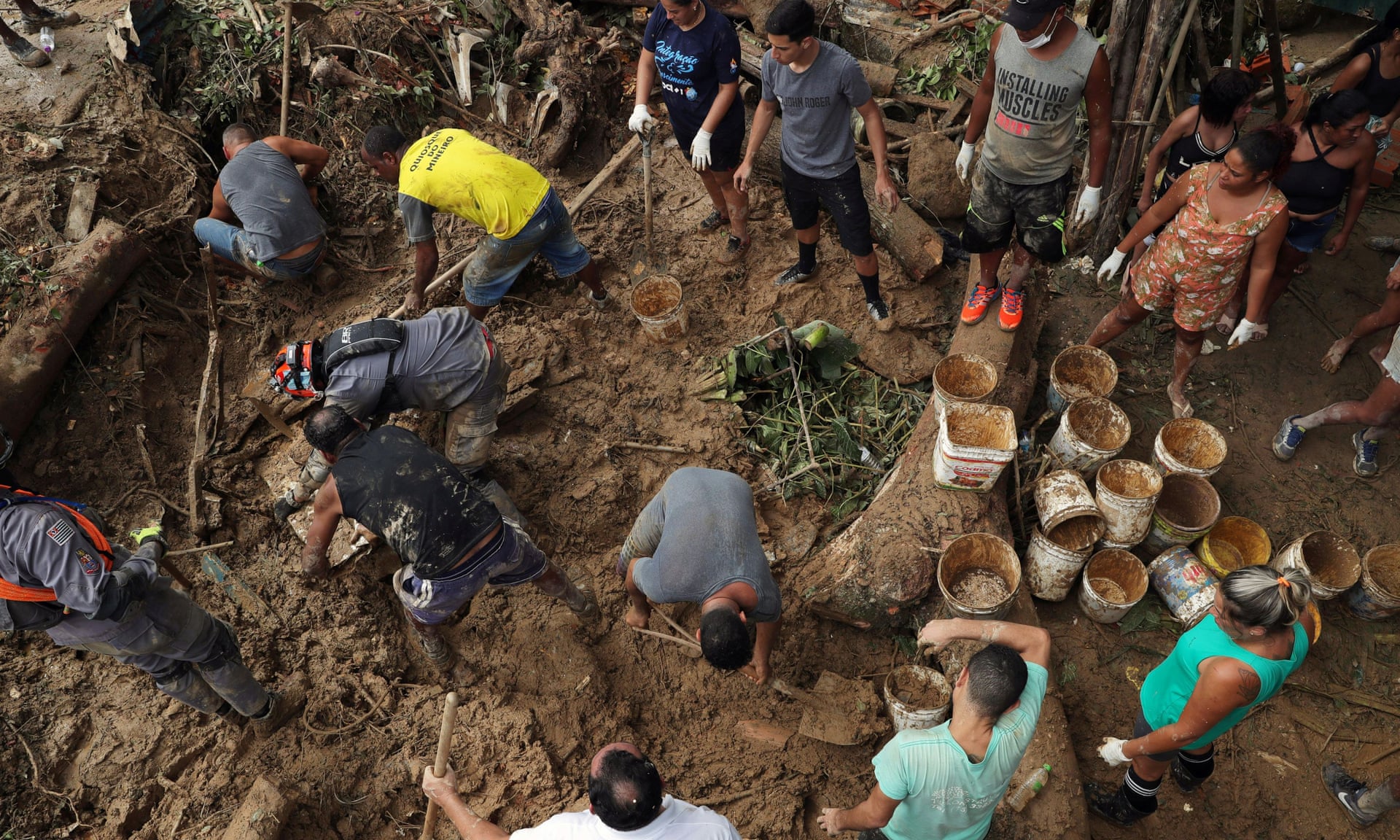
About 150 people have been killed or are missing following record-breaking heavy rains, landslides and flooding in three Brazilian states this year.
Scientists say global heating is contributing to more “extreme rainfall” events in the country, and warned that such disasters could become “the new normal”.
Monsoon rains kill Brazilians every summer, with floodwaters filling streets and landslides afflicting poorer communities and favelas built on steep hillsides, often without proper drainage or sanitation.
But global temperatures have climbed steeply since the 1980s, and a warming atmosphere causes more evaporation, making more water available for precipitation.
Official data sent to the Guardian showed “extreme rainfall events” – when more than 80mm or 100mm falls within 24 hours – have soared over the past 30 years in the capitals of the south-eastern states of São Paulo, Rio de Janeiro and Belo Horizonte, where the deadly rains happened.
Scientists blame a combination of growing cities and climate breakdown.
“We are seeing more and more extreme events happening in big and important cities,” said Tercio Ambrizzi, a professor of climatology at the University of São Paulo. “There is a relationship with the increase in average global temperatures.”
In Guarujá, a coastal town 25 miles from São Paulo, 282mm fell in just 12 hours last week – more than the total expected for the entire month of March.
“I never saw a day it rained like that,” said Rafael Soares, 22, a tyre factory worker from the town’s hillside Barreira do João Guarda community, hit by a landslide on 3 March that buried dozens of houses, killing 18 people and leaving dozens still missing.
Soares heard a deafening boom at about 1am and ran up the hill behind his house to find that part of his community had been buried.
“You couldn’t see anything, just earth and mud,” he said, describing “just hearing cries, people crying, not knowing what to do. There was no light, there was nothing.”
He spent days with neighbours and rescue workers digging survivors and the dead out of the earth and was housed with hundreds of other residents in a local school before being allowed to go home.
Days earlier, five people died during heavy rains across Rio de Janeiro. One man drowned when the Acari favela in north Rio was flooded. Bruna Aguiar, an activist from the favela’s Fala Akari collective, said rains have worsened there since a flood in 2013.
“Older people talk about other floods in the 1970s, but nothing of this magnitude,” she said.
According to data from Brazil’s National Institute of Meteorology (Inmet), one Rio de Janeiro weather station logged 134 extreme rainfalls from 1960 to 1990, and 221 from 1990 to 2020. A São Paulo weather station reported 15 from 1960 to 1990 and 44 since.
“There’s clearly been an increase of extreme events in the south-east of Brazil,” Ambrizzi said.
His own research from São Paulo – capital of the state where four people died in two days in February following heavy rainfall – backs this up.
Data from two weather stations in the city showed an increase in extreme rain events, according to a paper Ambrizzi and other scientists published in Annals of the New York Academy of Sciences last month. The dry season has begun extending from September into October in recent decades, they found.
“This, together with the inappropriate occupation of risky areas, such as slopes and banks of water-courses, leads to inundation, flooding and landslides,” the paper said. “Changes in extremes can be partly due to natural climate variability but can also be related to global warming and/or urbanisation.”
“Urban heat islands” created by the concrete and lack of vegetation in big cities increase temperatures, scientists said, and lack of permeable ground means more flooding. Global warming exacerbates the effect.
“When it is hotter, it rains more, and this gets worse if you have urban areas, areas of concrete and asphalt,” said José Marengo from Brazil’s National Centre for Monitoring and Alerts of Natural Disasters, and another of the paper’s authors.
Not all scientists hold global warming responsible. Brazil’s Space Research Institute said the rains were “meteorological phenomena typical of summer”, and blamed them on the South Atlantic convergence zone – “a band of clouds that channels moisture from the Amazon and the tropical Atlantic Ocean” for three days or more, producing heavy rain and cold fronts. Nor has the rain increased everywhere: the north-east has seen more extreme droughts, it said.
“You can’t generalise everything and blame global warming for everything,” said Josélia Pegorim, a meteorologist from the Climatempo weather service, while noting summer’s rains have been exceptional. “We are breaking records,” she said.
In January, 59 people were killed during heavy rains in Minas Gerais state. According to Inmet data, its capital Belo Horizonte saw 30 “extreme rain” events from 1960 to 1990, and 52 from 1990 to 2020.
In Belo Horizonte, 13 people were killed in January, when 935mm of rain was recorded at one weather station – the highest level since 1910, and more than half the rainfall expected for the whole year.
Extreme rain events and consecutive droughts are likely to continue, said Carlos Nobre, one of Brazil’s leading climate scientists and a senior researcher at the University of São Paulo’s Institute for Advanced Studies. “This is the new normal,” he said.